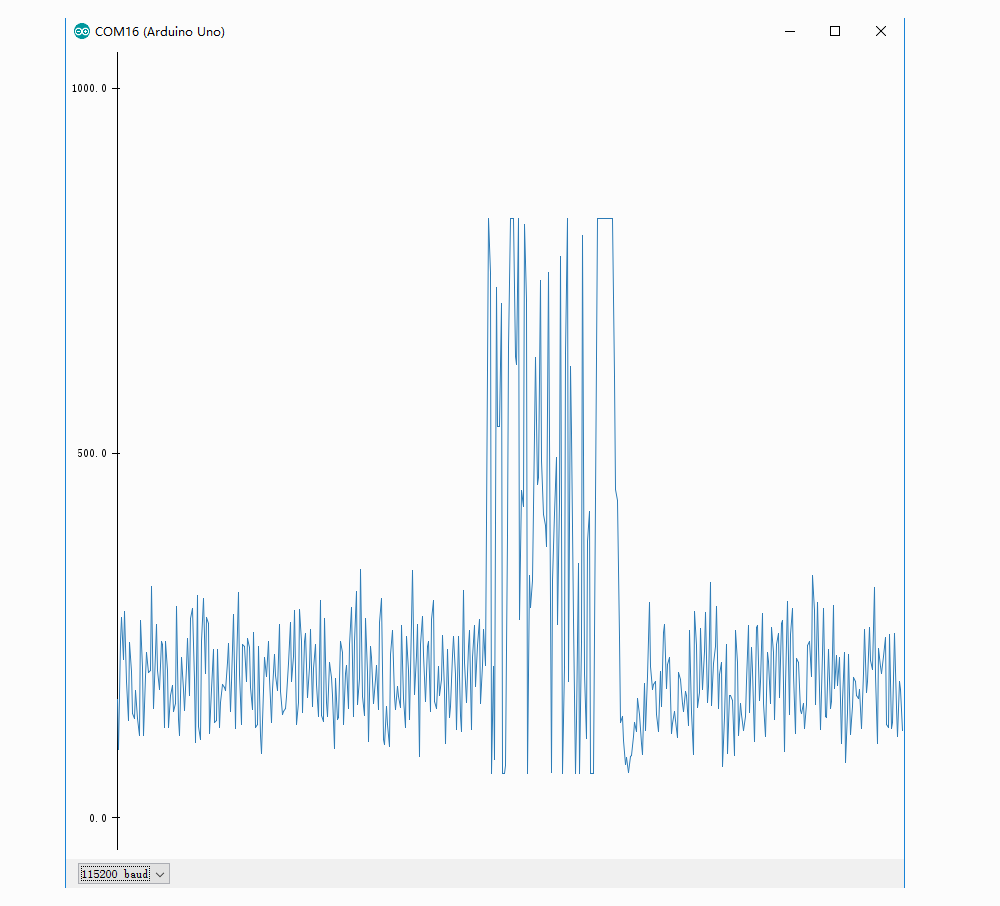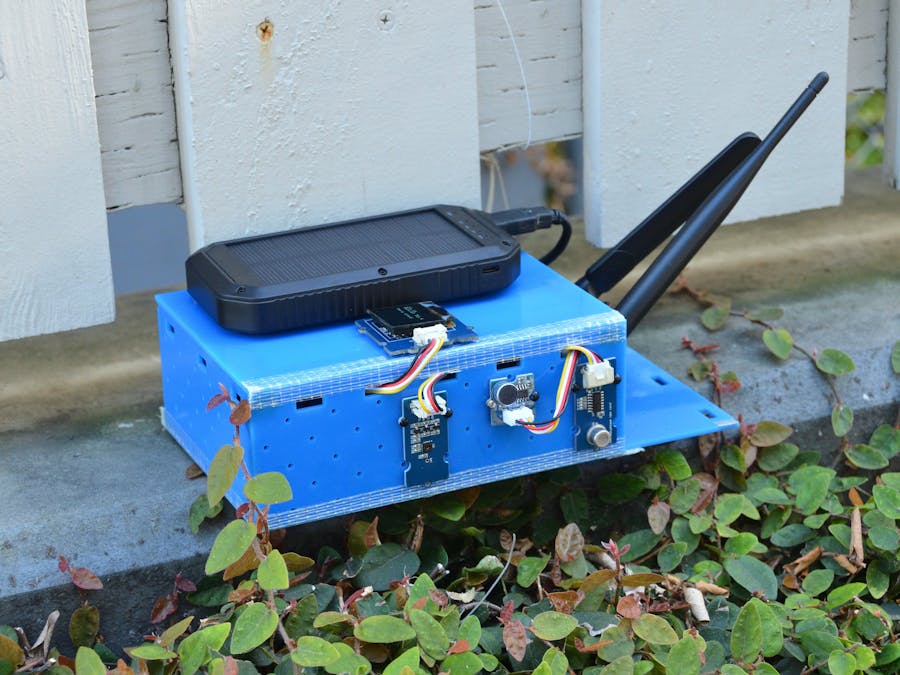What is a sound sensor? – Uses, Arduino Guide, Projects
A sound sensor is defined as a module that detects sound waves through its intensity and converting it to electrical signals. But do you know how sound sensor work? What it is used for? and How to pair a sound sensor with Arduino? Fear not, with today’s guide, I’ll be answering all of these questions!
In today’s sound sensor guide, I’ll be covering:
- How does a sound sensor work?
- Sound sensor applications
- Sound sensor Arduino tutorial
- Sound sensor projects to help you get started
How does a sound sensor work?
Sound detection sensor works similarly to our Ears, having diaphragm which converts vibration into signals. However, what’s different as that a sound sensor consists of an in-built capacitive microphone, peak detector and an amplifier (LM386, LM393, etc.) that’s highly sensitive to sound.
With these components, it allows for the sensor to work:
- Sound waves propagate through air molecules
- Such sound waves cause the diaphragm in the microphone to vibrate, resulting in capacitance change
- Capacitance change is then amplified and digitalized for processing of sound intensity
What is a sound sensor used for? Applications
Apart from building various electronic projects with Arduino (covered in the later section) and more, sound sensors are used in many other day to day applications including:
- Consumer electronics such as phones, computers, music systems
- Security and Monitoring systems such as burglar alarms, door alarm, etc.
- Home automation such as lighting your house by detecting whistle/clap instead of physically turning the light switch
- Ambient sound recognition and sound level recognition
Introduction to Grove – Sound sensor module

Before we move on to how to interface a sound sensor with Arduino, let’s first take a look at the sound sensor module we’ll be using for the tutorial!
Based on the power amplifier LM386, the Grove – sound sensor module is a simple, low powered, and highly compatible option suitable to easily kickstart your next sound sensing project!
With a wide voltage range and adjustable output by the potentiometer, it’s readily capable to detect the sound strength of the environment!
Its features include:
- Grove compatible interface
- Seeed’s own plug and play system, no soldering or jumper wires needed for pairing as compared to other sound sensor breakout boards
- Analog output signal
- Wide supply voltage range: 4V-12V
- Low quiescent current drain: 4mA
- 2.0cm x 2.0cm twig module
- Minimum external parts
On top of all these features and benefits, this sound sensor is only priced at $4.90!
*Note: This sound sensor module is used as a sound detector, to sense whether there’s surround sound and is not recommended for the collection of sound signals. For sound signal collection, you can consider the Grove – Loudness sensor instead!
Sound Sensor Arduino Tutorial
Compared to other sound sensors Arduino interfacing tutorial available, this requires no soldering, no breadboards, and no jumper wires. All thanks to our Grove system!
We provide the sound sensor Arduino code alongside it as well! All you need is 5 simple steps to get started.
Don’t believe it’s that simple? Let’s get started and you’ll witness the simplicity!
- You may refer to the above video tutorial instead if it offers a better learning experience
Here’s what you need:
- Seeeduino is Seeed’s very own version of the Arduino Board, made with benefits over the original
- Arduino Uno can be used as well
- Grove Base Shield
- For easy integration of grove modules
Hardware configuration
- Step 1: Connect Grove – Sound Sensor to port A0 of the Grove – Base Shield
- You can directly connect the Grove – Sound Sensor to Seeeduino as well as it has integrated grove ports
- Step 2: Plug Grove – Base Shield into Seeeduino
- Step 3: Connect Seeeduino to PC via a USB cable
It should look something like this after the above steps:

Software Configurations
- Step 1: Copy the code below to Arduino IDE and upload it to Arduino. If you’re unsure on how to upload the code, do refer to our guide here
// test code for Grove - Sound Sensor
// loovee @ 2016-8-30
const int pinAdc = A0;
void setup()
{
Serial.begin(115200);
//Serial.println("Grove - Sound Sensor Test...");
}
void loop()
{
long sum = 0;
for(int i=0; i<32; i++)
{
sum += analogRead(pinAdc);
}
sum >>= 5;
Serial.println(sum);
delay(10);
}- Step 2: Click on Serial > Plotter to get the changing curve of the sensor. Try making a sound and you’ll see the change of value!

This module is compatible with other platforms such as Raspberry Pi, BeagleBone, Wio, and LinkIt ONE as well. For which, we’ve provided a sound sensor Raspberry Pi guide for you here!
Sound sensor projects
Want to get started with sound sensor projects? Now that we’ve understood how to interface the sound sensor with Arduino, we can do so!
Here are 5 sound sensor projects to help you get started!
1. Detect sound pollution and more with SPCPM

With air and sound pollution common nowadays due to construction and industrial applications, this Solar Powered City Pollution Monitor (SPCPM) can help you sense overall air and sound quality!
What do you need?
Hardware components:
- Arduino Uno and Genuino Uno
- Helium Atom Xbee Module
- Seeed Grove – Air quality sensor v1.3
- Solar Charger and Battery
- Helium Element Access Point (Cellular)
- Seeed Grove – Sound Sensor
Software apps and services:
- Arduino IDE
- Google Cloud IoT Core
Interested to find out more? Check out the full tutorial by Peter Ma, Sarah Han, Shin Ae Hong, Grace Han, Kevin Vo on hackster.io!
2. Baby Monitor with Sound Sensor

If you’re a parent or caretaker that’s always worrying about your baby regarding its health, temperature, environment, etc., this smart baby monitoring project is the one for you!
By monitoring, notifying, tracking, and alerting on any irregular activity that happens, this serves as a good helping hand!
What do you need?
Hardware components:
Software apps and other services:
- Energia IDE
Interested to find out more? Check out the full tutorial by Pooja on Seeed Community!
3. Dog Bark Tracker with sound sensor

Are you a dog owner and does your dog bark often? If so, this is the project for you to try!
With this dog bark tracker, it uses a sound sensor to help monitor the sound of your dog and help track its barking patterns. This way, you can easily see what it’s up to while you’re out of the house!
What do you need?
Hardware components:
Software apps and other services:
Interested to find out more? Check out the full tutorial by justinisamaker on Seeed community!
4. Control your USB devices by Sound

Want to switch your USB power supplied devices to be controlled by your voice? You can do so with this sound sensor project!
What do you need?
Hardware components:
- BeagleBone Green Wireless (BBGW)
- Seeed Grove – Relay
- Seeed Grove – Sound Sensor
- Seeed Base Cape for Beaglebone
- Micro USB Cable
Software apps and other services:
- AWS Cloud9 Python
Interested to find out more? Check out the full tutorial by jerryyip on Seeed community!
5. Home Automation

One of the sound sensor applications covered earlier was home automation, and this project is a guide on how you can fulfill that!
Here’s what you can do with this project:
- Display household temperature, humidity, luminosity, volume control data collection on OLED screen
- Cloud service, data uploaded to Cloud platform Xively, real-time monitoring
- Data retention for reviewing how data changes over time
- Remote control Household Appliances by sending a message
- Table Lamp, 3D Printing, controlled by your phone light
What do you need?
Hardware components:
- LinkIt ONE
- Seeed Grove – Sound Sensor
- Seeed Grove – Light Sensor
- Seeed Grove – Temperature and Humidity Sensor Pro
- Seeed Grove – OLED Display 0.96″
- Seeed Grove – Relay
- Skeleton Box for LinkIt ONE
Software apps and other services
Interested to find out more? Check out the full tutorial by loovee on Seeed community!
Resources and Going Further
For more information on the Grove – Sound Sensor and going further beyond today’s guide, you may refer to the following resources:
- Grove – Sound Sensor Schematic and PCB in Eagle format
- [Datasheet]LM386.PDF
- [Codecraft]CDC File
Summary
That’s all for today on sound sensors. I hope with today’s blog, you get a deeper understanding of how sound sensor work and how to pair it with Arduino!
Today’s guide owes its thanks to the Seeed Grove – Sound Sensor, a highly recommended cost-effective option to start your next sound sensing project!
Seeed Grove – Sound Sensor


